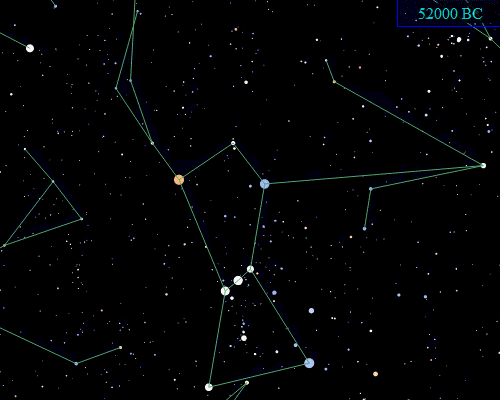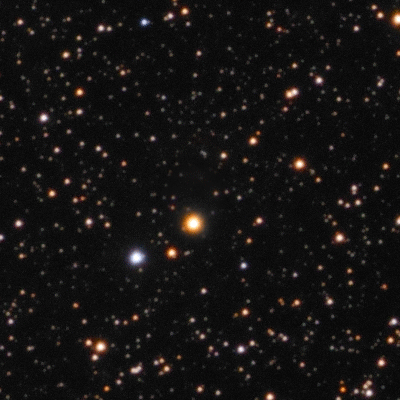Proper Motion
All celestal objects move relative to each other. In addition, the Earth itself has its own motion. As a result, objects change their positions on the night sky.
Objects which are closer like the Sun, Moon, planets in our solar system, commets etc. appear to move more noticeably. Star, galaxies etc. also do move, but their motion is not as apparent.
If we photograph the same area of the night sky over several years, we would find barely any differences in the positions of the stars.
These minute differences are however detectable by space-based telescopes such as Gaia.
The following GIF shows the positions of the stars in the famous Orion constellation over several thousand years.

Tony873004, CC BY-SA 4.0, via Wikimedia Commons
Star's Velocities
The 3D motion of a star in space can be resolved into two parts by an observer on Earth:- Radial Motion

- Proper Motion

This motion can be observed by measuring the shifts in the spectral lines of the star. Spectral lines shift towards red if the motion of the star is away from the observer, and towards blue if the motion is away from the observer. This shift is called the Doppler Shift.
In these units, we have a useful relation for calculating the transverse velocity of stars: $$v_\theta = 4.74 \mu r \text{ km/s}$$ Where \(v_\theta\) is in km/s, \(\mu\) is in arc seconds, and \(r\) is in parsec.
With \(v_\theta\) and \(v_r\) known, we have the 3D velocity of the star: $$v = \sqrt{v_\theta^2+v_r^2}$$
Find its 3D space velocity. You'll need its proper motion and distance.
Deatails about the star can be found on SIMBAD.
Solution:
We see that two proper motion values are mentioned on the page. These are the proper motions along the right ascension \(\mu_{\alpha}^* = -801.551 \text{ mas}\) and along declination \(\mu_{\delta}=10362.394 \text{ mas}\)
RA increases towards West
DE increases towards North
So, positive\(\mu_{\alpha}^*\) indicates motion towards West. Here it is negative so the star moves to the East (right).
Positive \(\mu_{\delta}\) indicates motion towards North. Here it is positive and hence the star moves to the North (upwards).
Using these, we find the proper motion as: \[ \begin{align*} \mu & = \sqrt{\mu_{\alpha}^{*2}+\mu_{\delta}^2} \\ & = \sqrt{-801.551^{2}+10362.394^2} \text{ mas} \\ & = 10393.35 \text{ mas} \\ & = 10.393 \text{ as} \\ \end{align*} \] We also have data on the parallax which gives us the distance. \(p=546.9759 \text{ mas}\). We can use our calculator to find that distance to the star \(r = 1.828 \text{ pc}\)Now we use calculate the transverse velocity \(v_\theta\) as: \[ \begin{align*} v_\theta &= 4.74 \mu r \text{ km/s} \\ &= 4.74\times 10.393 \times 1.828 \text{ km/s} \\ &= 90.05 \text{ km/s} \end{align*} \] Now, for the 3D space velocity, we get the radial velocity \(v_r = -110.11 \text{ km/s}\) from SIMBAD: (negative sign indicating a motion towards us) \[ \begin{align*} v &= \sqrt{v_\theta^2+v_r^2} \\ &= \sqrt{(90.05)^2+(-110.11)^2} \text{ km/s} \\ &= 142.24 \text{ km/s} \\ \end{align*} \]
 Barnard's Star's proper motion from 2007 to 2015
Barnard's Star's proper motion from 2007 to 2015 credit: RickJ
Towards the top is North and towards right is East.